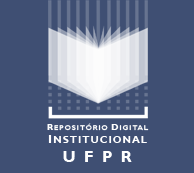TISSUE CULTURE STUDIES OF YELLOW PASSIONFLOWER (Passiflora edulis F. Flavicarpa DEG.)
DOI:
https://doi.org/10.5380/rsa.v2i1.1011Abstract
With the aim of study the yellow passion fruit (Passiflora edulis f. flavicarpa Deg). In vitro vegetative technical propagation several assays were proposed. Started with culture of adult material. Was used the MS medium with several concentrations of BAP: 0,5; 0,75; 1,0; 1,25; 1,5; 2,0; 2,5; 3,0 mg.L-1 and the access 156 x 180 to determine the concentration to be used. Was determined the concentration of 2 mg.L-1 of BAP to test the others access. The percentage of explants with bugs occurred in the following proportion: 156 x 123 - 64%; 156 x 180 - 40%; 352 - 30%; (156 x 123) x (118 x 204) - 28%; 309 - 0%. however the buds formed were small, isolated and no elongation. On microcuttings of adult material, were tested medium with and without auxin the rnicrocuttings rooted was obtained with MS/2 medium, 3 mg.L-1 of IBA and 0.5 mg.L-1 NAA on proportion of: 352 - 60%; 309 and (156 x 123) x (118 x 204) - 40%; 156 x 123 and 156 x 180 - 20%. however, as there werent obtained microcuttings development, news assays were proposed with juvenile material, initiate with in vitro seeds germination. To this assays were evaluated the effects of different substrate and temperature on germination of yellow passion fruit seeds. The experiment design used was the completely randomized with factorial scheme (3 x 3) with nine treatment and three replications. The in vitro germination could be found at 18 th day, was evaluated. The highest germination rate was obtained for treatment pre-soaked by 48 hours, alternate temperature ranging 23 30ºC and substrate consisting of cotton (86.7 %). Cotiledonarv Ieaves no expanded were used as explant with to test the effect of different vitaminic complex on yellow passion fruit in vitro regeneration. Four medium were tested. supplemented with BAP cytokinin. Two assays tested the MS salts and vitaminic complex and others two tested the MS salts and B5 vitaminic complex both supplemented with 1 and 2 mg.L-1 of BAP. The medium were solidified 2,6 g.L-1 Phytagel. Each assay was constituted by 10 petri plates with 6 explants/plate. The plantlets in vitro were used as microcuttings; were tested 10 test tubes with total MS medium and 10 with the salts MS and vitaminic complex B5, with 1 microcutting ia each tube. The average were compared by Tukeys test with 5% of probability. Plant regeneration occurred by direct organogenesis. Medium supplemented with B5 vitaminic complex shown increase on capacity of yellow passion fruit regeneration in both growth regulator concentration as on relation of explant number with buds as number of buds per explant. The rooting of regenerated shoots ranged 80-93%. The phase of acclimation occurred without damages. The microcuttings have developed itself and rooting without necessity of growth regulators, there wasnt significative differences in this assay. The number of chromosome was determined bv FeuIgens method. Regenerated plants shown 2n=18 chromosomes.
Downloads
How to Cite
Issue
Section
License
Direitos Autorais para artigos publicados nesta revista são do autor, com direitos de primeira publicação para a revista. Em virtude da aparecerem nesta revista de acesso público, os artigos são de uso gratuito, com atribuições próprias, em aplicações educacionais e não-comerciais.


